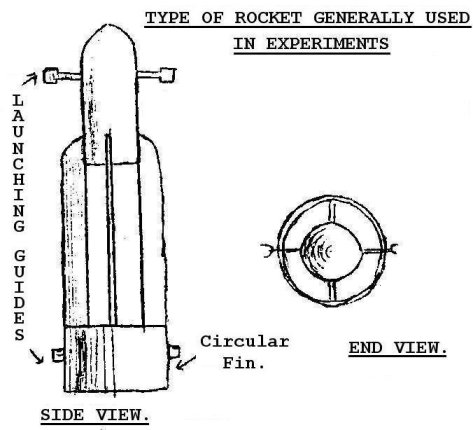
| A ROCKETRY REVELATION | FOOTNOTES Page | Obituary Page | |
| |||
|
The Manchester Interplanetary Society was inaugurated on June 9th 1936, by a small group of rocketry enthusiasts, with its aim being the forwarding of the science of astronautics for commercial use, by experimentation or other means. The first meeting of the society was held a week later on June 16th, when communication was established with the majority of the astronautical societies, and plans drawn for a loxygen-petrol rocket-motor. (Loxygen is the recognised abbreviation for Liquid-Oxygen; Ed.) Preparations were made for its construction, when it was learned that the use of liquid fuels in England was surrounded by such formidable obstacles as to render their use practically impossible for experimental purposes. Letters to the government proved of no avail, and reluctantly the project had to be abandoned. Members' activities were diverted to powder fuels as the only means of carrying on practical research. Mr. E. Burgess, the President, had been experimenting with small powder rockets some eighteen months previous to the society's formation, and his experience had given him a good knowledge of the fundamental principles of rocket flight. Consequently early research was mainly conducted by Mr. Burgess and was divided into various sections, such as methods of launching, fin design and parachute release devices. Research meetings were held in September and December 1936 and March 1937, at which rockets of varying design were tested—with varying success. A small two-step rocket fired at the December meeting proved highly successful despite the fact that it travelled straight into the gale, demonstrating that this type of rocket is quite practicable. From the trajectory and duration of flight, it is estimated that the second step attained a velocity of 120 m.p,h, travelling at a height of 300 to 350 feet, AGAINST a high wind. During the months of September to December 1936 some 30 to 40 experimental rockets were tested, One big disadvantage of the use of fins was the large area of resistance, compared with the body of the rocket, against any opposing wind. If fired on a fairly windy day, the rockets would deviate from a vertical course and turn into the wind. One line of future research will be the study of methods to stabilise a rocket in flight without the aid of fins. However, at the March meeting we discovered that even powder fuels are surrounded with many petty limitations as to their use, and friction ensued with the police, upsetting all future plans for research. Activities were suspended for several weeks, but fortunately the charges of contravening the Explosives Act of 1875 were dismissed. April saw the issue of the society's journal—THE ASTRONAUT. Due to this and the publicity gained from the past few weeks, the membership began to swell. At present in a duplicated form, THE ASTRONAUT will be printed after the October issue. The following month, May, the President visted M. Robert Esnault-Pelterie, returning from Paris with renewed enthusiasm. Then in July, Headquarters were transferred from Ashton New Road to Longford Place, Manchester, where a regular meeting room was established. The Annual General Meeting was held on July 10th—the first transatlantic member enrolled in August — and now activities are chiefly concentrated upon the publication of the journal. It would be injudicious at this stage to mention anything of future research beyond the fact that the greater part will undoubtably be carried out by the proving-stand method. ■
© 1937, Harry Turner & The Science Fiction Association, 5 Florist Street, Leeds 2. |
 |
